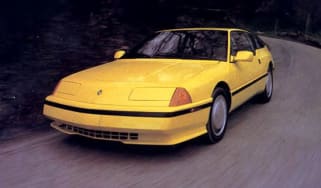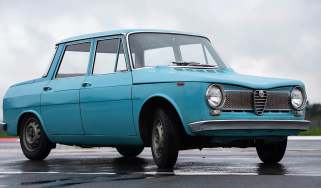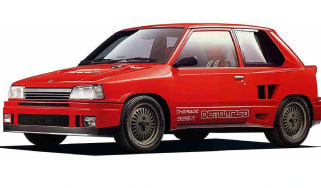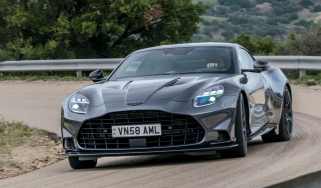Ford GT70 – dead on arrival
It was supposed to be Ford’s first mid-engined rally contender, to be joined by 500 homologation road cars, but a plethora of problems saw it stall at the testing phase

The 1960s went well for Ford in motorsport. The GT40 gave Ferrari a fat lip at Le Mans. The Cosworth-developed DFV quickly became an all-conquering F1 engine. The Lotus Cortina took British and European Touring Car titles, and proved itself to be a reasonable rally car before that role was passed to the Escort Twin Cam. However, Ford’s competition people worried that front-engined, rear-drive cars would be outclassed on the special stages of the 1970s and decided to try a new approach.
That’s why Motorsport boss Stuart Turner and driver Roger Clark used the journey back from the Monte Carlo rally in March 1970 to plot a bespoke rally machine that could take on the cars that had just kicked their Blue Oval arses into fifth place: the Porsche 911 and Alpine A110. The key to success, the two men reasoned, was weight over the driving wheels, so Turner commissioned Len Bailey, one of the people who’d made the GT40 a race winner, to create a compact, agile mid-engined rally car using as many existing Ford parts as possible.
In just a few months a pair of prototypes had been built, the second of which was unveiled at the Brussels motor show in January 1971. Called GT70 (because it had been thought of in 1970, not because it was almost six feet tall) the new car was built around a steel frame clothed in fibreglass panels, under which were suspension bits from the Taunus and Cortina, brakes from the Zephyr, the ZF gearbox from the GT40, and the 2.6-litre fuel-injected V6 from the Capri RS2600. The plan was to sell at least 500 road-going versions.
> Porsche 965 – Dead on arrival
Another four prototypes followed, and from late ’71 Ford campaigned these unhomologated cars in the French rally championship to see how they got on. Things didn’t go brilliantly. The V6 was deemed too hefty for the job and hastily replaced by the lighter BDA four-cylinder. The pop-up lights wouldn’t stay popped up under the stresses of rough road running and had to be fixed in place, spoiling the delicate Lotus-like lines. And on the home front, Ford’s designers were peeved that the exterior style had been created by the motorsport engineers without their input and had no resemblance to the rest of the Ford range. In light of this, Ghia was commissioned to transform the GT70 from a fey ’60s-style sports car into a dramatic ’70s sex wedge with Ford DNA, but by then the original design (pictured) was out there and competing in rallies, making for a marketing headache in waiting.
Two, actually, because the GT70 had an even bigger problem: it wasn’t very good. Testing proved that the structure simply wasn’t stiff enough, which did the handling no favours. On top of that, the interior was cramped and hot, the engine access was poor, and star driver Clark was so dismissive of this awkward and uncooperative machine that he compared it to a camel. To make matters worse, the BDA-equipped Escort RS1600 was now defying expectations to become a very successful rally car, front-engined and rear-drive though it was, and this mid-engined in-house rival would struggle to do better.
Nor did the GT70 have great prospects as a road car, not once Ford’s accountants had estimated that the complexities of low-volume build would mean a showroom price of £5000 at a time when a Jaguar E-type V12 was a little over £3000 and didn’t come with Cortina suspension. As the strikes of the early ’70s created a cashflow headache, the GT70 was an obvious place for Ford to save money and the project was culled in early 1973.






